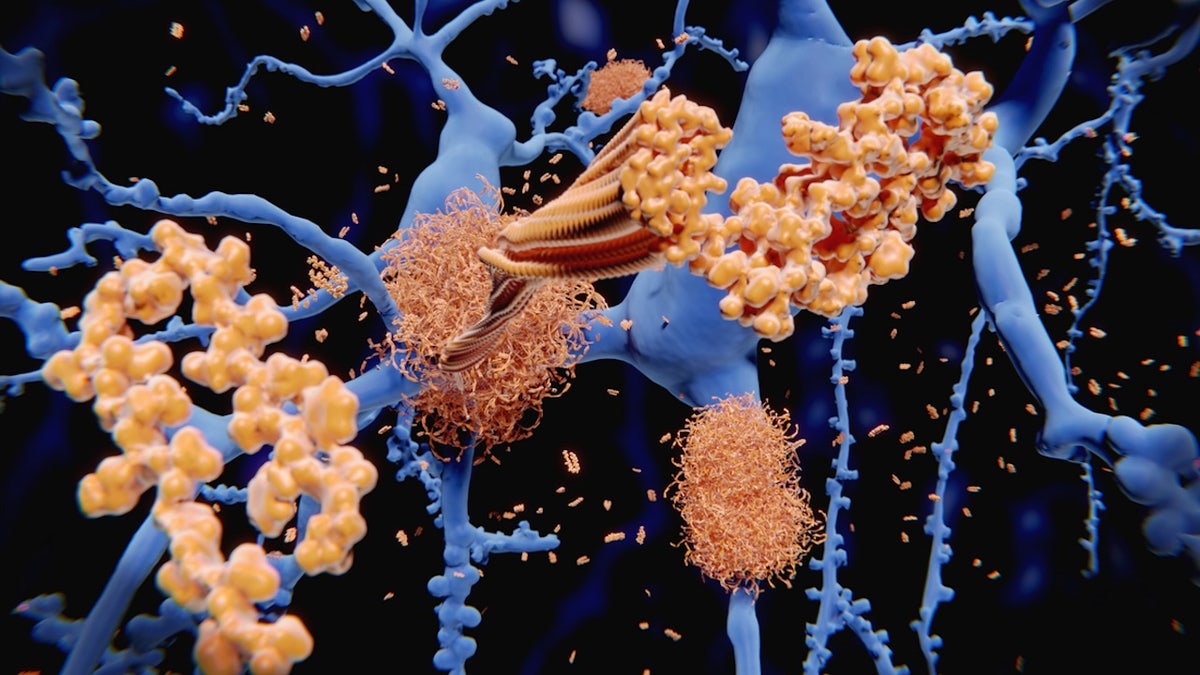
NEWYou can now listen to Fox News articles!
Levels of iron in the brain could be a warning sign of future Alzheimer’s disease, a new study suggests.
High levels of the chemical element have been shown to increase brain toxins and trigger neurodegeneration, resulting in cognitive decline — especially when they interact with the abnormal amyloid and tau proteins that are the hallmark pathologies of Alzheimer’s disease.
Researchers at Johns Hopkins University found that a special MRI technique called quantitative susceptibility mapping (QSM) can measure levels of brain iron.
EARLY ALZHEIMER’S SIGNS DETECTED IN 3 MINUTES WITH NEW BRAINWAVE TEST
“QSM is an advanced MRI technique developed over the last decade to measure tissue magnetic susceptibility with good precision,” said the study’s senior author Xu Li, PhD, associate professor of radiology at Johns Hopkins University in Baltimore, Maryland, in a press release.
“QSM can detect small differences in iron levels across different brain regions, providing a reliable and non-invasive way to map and quantify iron in patients, which is not possible with conventional MR approaches.”

Levels of iron in the brain could be a warning sign of future Alzheimer’s disease, a new study suggests. (iStock)
Compared to traditional imaging options for Alzheimer’s diagnosis, including PET scans, QSM MRI is “non-invasive and much more affordable,” according to the researchers.
This measurement could help predict the likelihood of mild cognitive impairment (MCI) and cognitive decline, even if the person has shown no symptoms.
DEMENTIA RISK SLASHED WITH ONE COMMON HEALTH INTERVENTION, STUDY FINDS
In the study, which was published in the journal Radiology, the researchers tested the MRI technique on 158 cognitively unimpaired participants from a previous research project.
After a follow-up period of 7-½ years, the team concluded that higher iron levels in two key parts of the brain were linked to a higher risk of mild cognitive impairment, which is typically a precursor to the development of Alzheimer’s dementia.
“Brain iron changes may be measured years before memory loss, when the participants are still cognitively normal.”
“The key takeaway of our study is that higher brain iron levels, especially in some critical brain regions related to memory and learning (entorhinal cortex and putamen, as shown in our study), are linked to a two- to four-times higher risk of developing MCI and faster cognitive decline,” Li told Fox News Digital.
CLICK HERE TO GET THE FOX NEWS APP
“And such brain iron changes may be measured years before memory loss, when the participants are still cognitively normal.”
“Using QSM, we found higher brain iron in some memory-related regions that are linked to a higher risk of developing cognitive impairment and faster cognitive decline,” Li said. “This risk is even higher when the participants have higher levels of amyloid pathologies.”

High levels of the chemical element have been shown to increase brain toxins and trigger neurodegeneration. (iStock)
The study did have some limitations, Li noted, including the smaller group of participants.
“The study population is from a specialized cohort consisting of mainly white, highly educated participants with a strong family history of Alzheimer’s disease,” the researcher noted.
If larger, more diverse studies confirm these findings, it could support the use of this MRI technique for patients at a higher risk of dementia, the release stated.
CLICK HERE TO SIGN UP FOR OUR HEALTH NEWSLETTER
“I think we should be hopeful,” Li said. “We can use this kind of tool to help identify patients at higher risk of developing Alzheimer’s disease and potentially guide early interventions as new treatments become available. Also, besides serving as a biomarker, brain iron may become a future therapeutic target.”
The researchers also hope to make the QSM technology more standardized, faster and more widely accessible in clinical practice, he added.

While brain iron is associated with neurodegeneration and could lead to faster cognitive decline, it is also an important element for cognitive health, the researcher said. (iStock)
Li noted that while brain iron is associated with neurodegeneration and could lead to faster cognitive decline, it is also an important element for cognitive health and neurodevelopment at a young age.
“While iron chelation (to remove iron) therapies for Alzheimer’s are currently explored, their effect is still not very clear and much more research is needed,” he said.
For more Health articles, visit www.foxnews.com/health
The study was supported by the National Institute of Biomedical Imaging and Bioengineering, National Institute on Aging and the National Institutes of Health.



